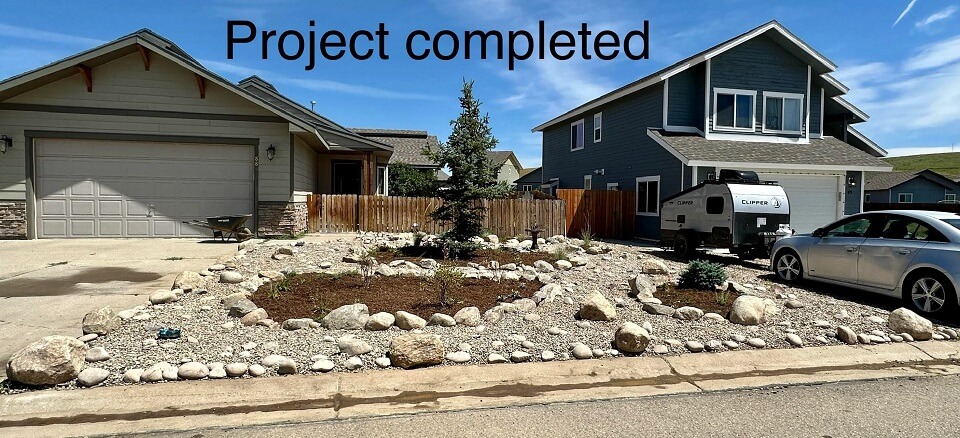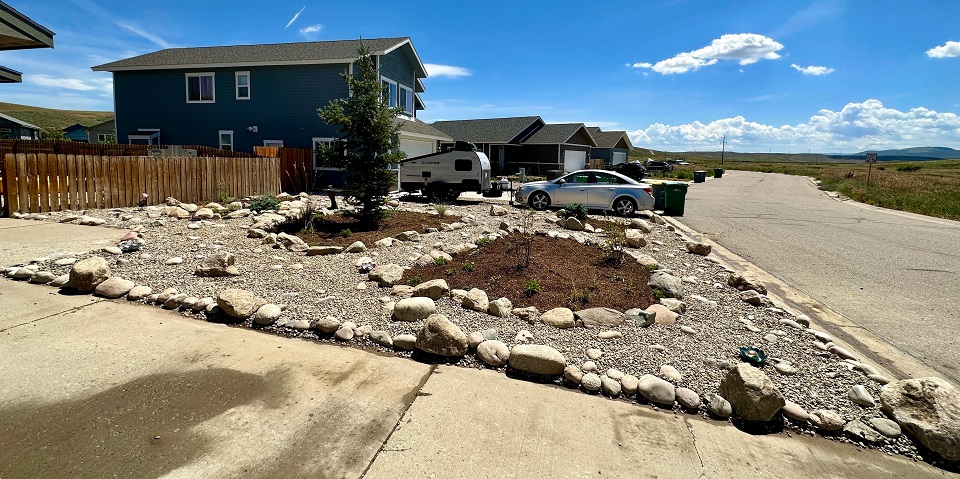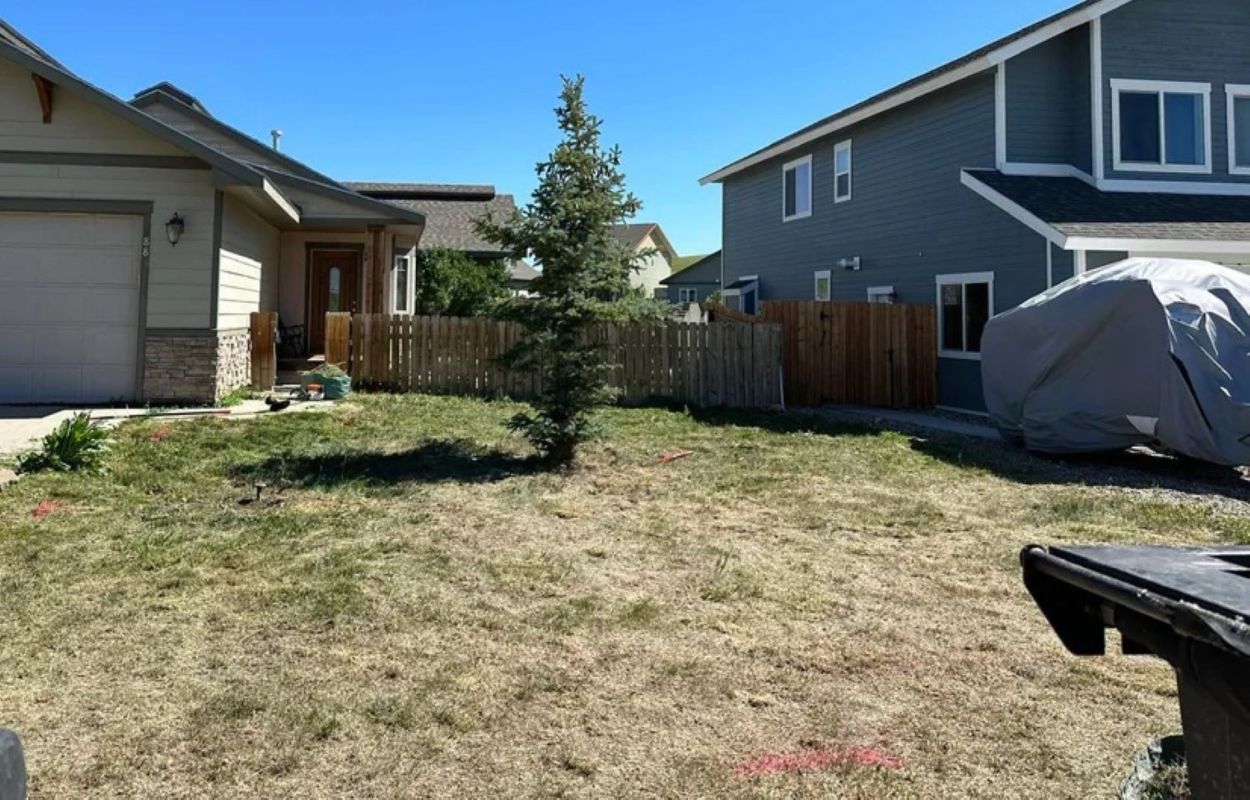They say the grass is always greener on the other side, but with xeriscaping, it actually isn't — and that's a good thing.
Xeriscaping is the practice of landscaping to reduce or eliminate the need for irrigation. This often entails replacing green, grassy lawns with soil, rocks, mulch, and drought-tolerant native plants. According to National Geographic, "Supporters of xeriscaping say it can reduce water use by 50 or 75 percent."
This Redditor, located in the drier region of northwestern Colorado, took to the social media forum to share their newly xeriscaped yard, complete with drip irrigation, which conserves water and fertilizer. Plants in the yard include pussytoe, blue spruce, and elderberry shrub, all of which are native to Colorado.


"They came out and finished it up today," the Redditor shared in r/xeriscape. "I've already been seeing butterflies and bees hanging out. The bees seem to love the bird bath, so I'm super happy about that. The birds that live in the big spruce have been hopping around everywhere too."
Replacing traditional lawns with habitat for native plants is hugely beneficial to the environment. It creates a healthier ecosystem for pollinators all year round, which ultimately benefits humans, as pollinators protect our food supply. It also saves time and money on lawn maintenance. Eco-friendly, low-maintenance lawn replacement options include buffalo grass, which is native to North America, and xeriscaping.
Fellow Redditors took to the comment section to ooh and ah over the homeowner's yard transformation.
"Gorgeous!" one user commented. "I'm inspired."
"Looks great!" said another. "Last year when we had ours done the bees and butterflies were all over the plants before they'd even gone into the ground. It's a really nice feeling. You probably qualify to certify your yard as a wildlife habitat if you wanted to."
Join our free newsletter for easy tips to save more, waste less, and help yourself while helping the planet.









